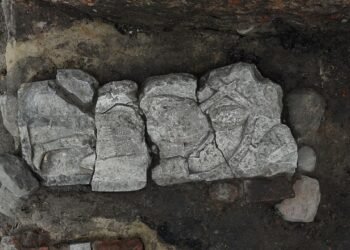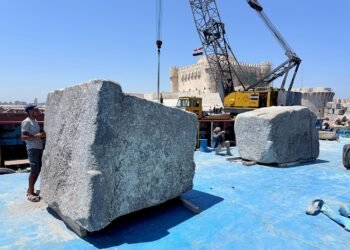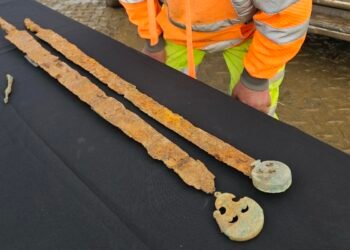Archeologists have unearthed a 3,800-year-old cuneiform clay tablet in southern Turkey during restoration efforts following the massive earthquakes that struck southern Turkey earlier this year, Anadolu reported yesterday.
The tablet, which features a cuneiform inscription in the Akkadian language, was found by a team of archeologists during excavations at the Accana tumulus, a nearly 4,000-year-old site located in the southern province of Hatay.

The earthquakes in February, not only caused extensive destruction in the region but also impacted the site, believed to be the location of Alalakh, the capital of the Mukish Kingdom during various historical periods.
Initiated by the Turkish Culture and Tourism Ministry, restoration and protection efforts are underway to repair the damage incurred by the historical site’s palace walls.
Professor Murat Akar of Hatay Mustafa Kemal University, who led the archeological team, shared the details of the discovery. “As part of the study, the team that removed the rubble of the walls found a clay tablet among the ruins,” he stated.
The tablet holds a unique historical record. An agreement by Yarim-Lim, the first known king of Alalakh, to purchase another city is documented on the tablet.
Akar emphasized the tablet’s exceptional preservation, stating, “While removing the debris of a few collapsed walls at the mound, it was very exciting to come across a tablet that had never been touched or damaged.” He highlighted the economic significance of the finding, suggesting that the kings of the region during the Middle Bronze Age possessed substantial economic power and potential, as evidenced by documented written records. The tablet includes not only details about the purchase agreement but also potentially the names of individuals from the city who witnessed the sale.
The implications of the discovery extend beyond economic insights. Assoc. Prof. Dr. Akar explained, “The work came out as an extremely unique example, especially to decipher the economic structure of that period, the relationship between cities, and the economic and political model.”
The tablet will undergo further examination before being transferred to a museum.























